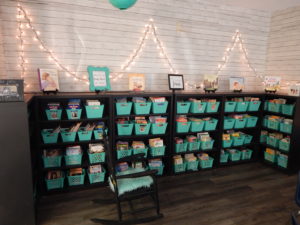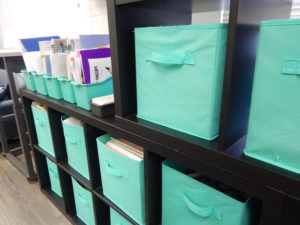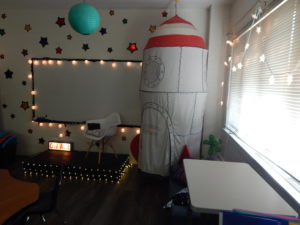As we discussed in Boosting Brain Function (Part 1), teachers can create an environment and spaces in their classroom that work with their students’ brains to maximize learning and retention. In this section, we take a look at how teachers can arrange their classrooms and learning spaces in such as way as to focus and calm the brain.
- Focusing the Brain:
- Blank Space: In order for students to focus, blank spaces are needed. Make sure one wall is completely empty, so if students need a mental break, their brain can easily find a way to reset to keep maintaining focus. Student can’t sustain attention for long periods of time; providing a blank space allows their brains to refocus.
- Dedicated Space to Focus the Brain: Once you know what it is extremely necessary for your students to focus on, have a dedicated space for this. Your students will know exactly in what direction to look to be redirected to gain focus again!
- Decoration: Keep decoration at a minimum. Learning spaces should serve students. Function comes before cuteness, especially if the latter takes unnecessary space.
- Colors: if you can’t paint one or two walls with a calm color, no worries. You can still provide a corner where the colors used are calmer than the other corners in your classroom. We can’t have the entire room be calm and serve our students’ brains correctly. If you want to differentiate your calming spaces from your engaging spaces in your classroom, do it in different corners or spaces!
Photo: Yanina Jimenez Photo: Yanina Jimenez Photo: Yanina Jimenez
2. Calming the Brain:
- Dedicated Space to Calm the Brain: Make sure you have a space where students can retreat if they need to. That space can be by your classroom library or any space with books or other elements that can help your student calm, such as: bean bag chair(s) or floor cushions/large pillows, soft rug, relaxation CD and player, headphones, magazines, low partitions/dividers for privacy, visual calming strategies, visual timer, etc.
- Students’ Stuff vs. Teacher’s Stuff: students’ stuff should be more visible than the teacher’s stuff. Even if students’ stuff are to be more visible, it doesn’t mean that everything students need should be visible. Try to hide these items, as much as you can and leave out whatever is going to be needed that day, the rest can be put away. Get rid of things you don’t need anymore.
- De-clutter: De-clutter walls, corners, bookshelves, things in storage, books, papers, file cabinets, supplies, furniture, things on tops of bookshelves. Whatever is left, try to put in bins, cabinets or behind curtains. You don’t need to see everything you need, you can assign places for it and access it the same way without having it all displayed! Learn more: https://thecornerstoneforteachers.com/truth-for-teachers-podcast/classroom-clutter-keep-toss/
- Bookshelves: Try to have bookshelves by categories and to avoid putting décor and more bins on tops of bookshelves. Avoid piling up things on top of desks, tables, bookshelves, cabinets.
- Storage: After you bring everything to a minimum, store everything labeled by categories and leave out only the things that are extremely necessary and used frequently.
- Nature objects: bring your students to nature as much as possible, but if this is not possible, bring nature as much as possible to your learning space. Bring plants, use rocks as manipulatives or other nature objects that are age-appropriate.
- Lights: To calm the brain, you can turn some lights off and turn on string lights or lamps. This too calms the brain in an effective way.
These simples changes to your classroom setting can inspire your students to focus and can provide them moments of retreat, rest, and reflection. Students will be calmer and more focused, leading to greater success in their learning experiences.
Learn more about creativity and brain function in the classroom.




